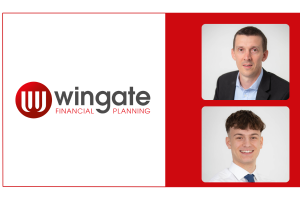Well, that was unexpected.
Our infographic on the retail advised platform market seems to have caught the imagination of lots of you; it’s coming up fast on 10,000 views on LinkedIn (which is a lot for little old us) and is one of the most downloaded things ever from the lang cat website. Mind you, that’s before you had a General Election to concentrate on.
At the same time, our DMs and emails have filled up with folk asking questions about how we got to various conclusions, so that’s the purpose of this blog. The thing about infographics, of course, is that they’re great at presenting information simply, but when the information is in itself not simple, you have to take them for what they are.
So here’s a quick rundown of the answers to the five most asked things:
- This particular infographic shows market size figures which are based on the retail advised market only. By that we mean the platforms we cover in our annual advised guide. These are platforms that an IFA or restricted adviser could reasonably sign up to in an open-market due diligence exercise. So we don’t include (for example) the advised Hargreaves Lansdown book, the IPS book for Cofunds, or the Towry / Tilney book for SEI. Lots of these assets are advised, but not in that open market sense.
- Our figures are quite a lot lower than some you’ll see because we are rigorous in stripping out institutional monies, D2C monies, double counting and other non-retail advised assets for this particular view. Most platforms don’t readily give these kinds of channel splits, so we often have to do some estimating, but we’re pretty confident in our numbers. We also do numbers which include all that stuff, but not in this infographic. We might do some other ones.
- However, the ‘bunce per customer’ figure does include those other channels in some cases (where we can’t reasonably split it out from annual reports and accounts), Cofunds being a good example.
- The projected tech provider split is done on narrow ‘constant market shareâ’ terms, that is to say it only tries to give a sense of this particular market channel shifting as a result of replatformings over the next few years. We are taking no view on winners and losers over that time (though keep reading below for a bit more).
- The tech provider landscape is quite a lot wider when you allow other advised channels in, you’d see a lot more SEI and Pershing, for example. You’d start to see JHC Figaro appearing if we brought in some of the D2C stuff – and if we brought Hargreaves – advised assets in then the ‘proprietary’ wedge would increase dramatically.
WHAT DO WE THINK IS GOING TO HAPPEN?
That 2020 view in the tech provider split is naturally interesting. As you may know, we wrote a couple of years ago that ‘platforms are dead’, and by that we meant that the market as it stood was starting to fragment and would re-form as something different, which might or might not be a beautiful butterfly.
Since then we’ve seen nothing to counteract our view. Pricing in the retail space is converging. The regulator is starting to take a keen interest in competition, and whether platforms are doing enough (or anything) to drive down costs for customers. To my mind the greatest failure of the platform market has been the inability to aggregate customer orders to the extent that they can access institutional share classes rather than 75bp retail classes. That needs to change.
To that end, it’s worth mentioning a couple of trends we think will be significant. The first is one we wrote about in our recent paper called Level Up (you can download that here). As more and more adviser firms realise that they can really start to power through in terms of growth (whether through co-operation, consolidation, acquisition or organically), they’ll be able to remake the platform sector in their own image, and that means not accepting the retail offerings that are out there at the moment.
This will lead to lots more strategic platform partnerships in the Succession / IPS / Tilney mould. We think ‘black box’ style providers such as SEI (who sponsored that report), Pershing and IFDL will be beneficiaries of this, though we’re not going to be drawn on who they’ll cannibalise along the way. If we were betting cats, we’d reckon that between a quarter and a third of the UK advised landscape will be through these kinds of propositions in the next five years. Given that the wider asset view probably brings us up to around £450bn or just shy of that at end 2016, and allowing for a reasonable organic growth in assets, that suggests we could be up to £150bn or £200bn in those kinds of propositions by 2022.
At the same time, we think you’ll see a resurgence of monies flowing into DFMs ‘own custody’ DFM models on platform being one of the stranger developments of the last few years, and also into the direct custody of those multi-asset providers who are up for it. Chief among those, of course, will be Vanguard.
All of this means that the wider advised space, beyond the pure retail element we captured in the infographic, is going to be a fascinating place for some time to come. We’re working on how to reflect that in our next advised platform guide, which will bring the wider set in and which will be available in September or October this year, depending on whether I let everyone have summer holidays or not.
And that’s it for now. Enjoy the politics and that.




